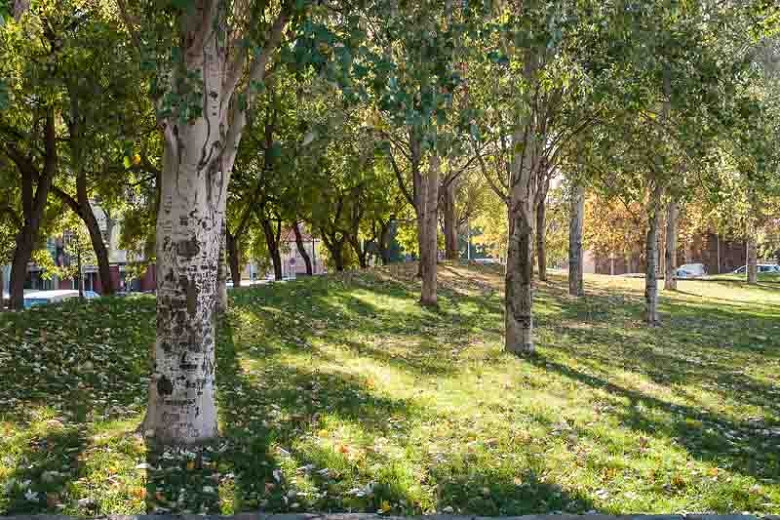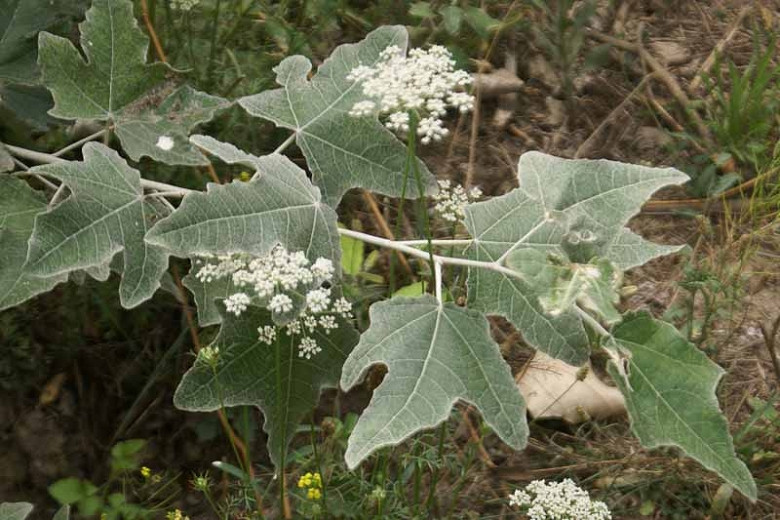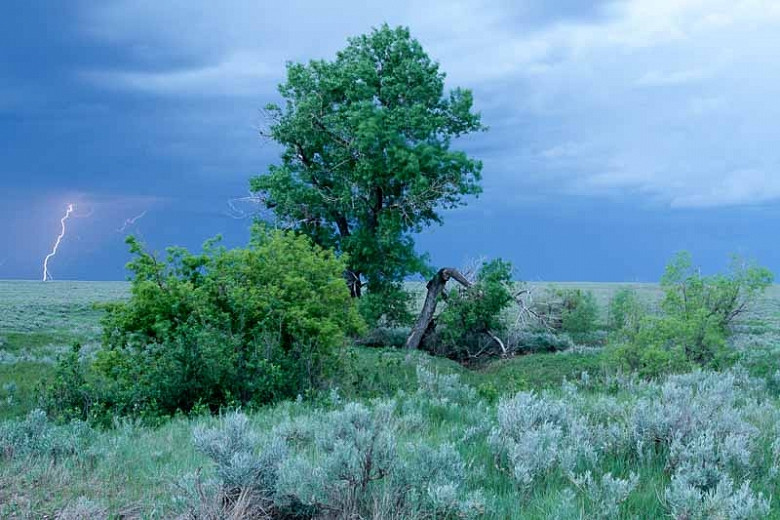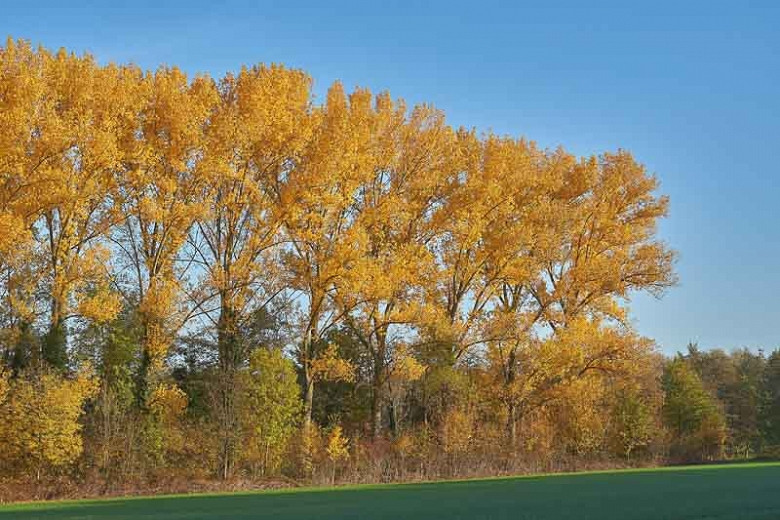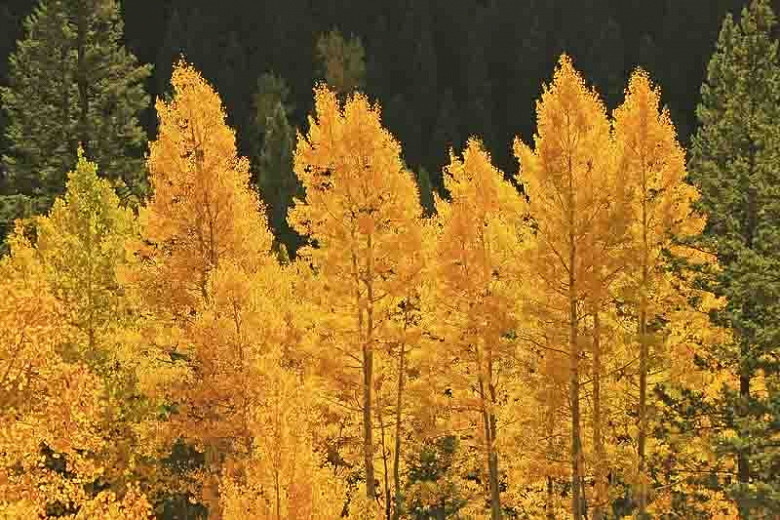Populus alba (White Poplar)
Fast-growing, Populus alba (White Poplar) is a wide-spreading, suckering, deciduous tree with a broad crown boasting an attractive foliage of 3-5 lobed leaves, up to 5 in. long (12 cm), lustrous dark green above and white and downy underneath. The fuzzy undersides make the tree sparkle when the breeze stirs the leaves, creating a beautiful two-toned effect. Equally striking, the bark is very white and smooth when the tree is young, becoming darker and more furrowed with age. In spring, before the leaves emerge, small male and female flowers appear in separate catkins on separate male and female trees. The female flowers give way to capsules that split open to release clouds of cottony seeds. Roots can be invasive as White Poplar develops an extensive root system that may damage drains and foundations. The wood of White Poplar is fairly brittle and subject to breakage in storms. Grown for its very rapid growth as a specimen tree, it is equally useful for windbreaks.
- Grows up to 50-80 ft. tall and wide (15-24 m). This plant suckers to form colonies.
- A full sun lover, this plant is easily grown in average, consistently moist, well-drained soils.
- This beautiful tree may be subject to leaf spots, poplar bacterial canker, honey fungus, tree rusts, leaf beetles, sawflies, and caterpillars.
- Propagate from hardwood cuttings in winter or suckers in autumn or late winter.
- This plant is listed as a noxious weed in one or more Midwestern states and should not be moved or grown under conditions that would involve the danger of dissemination.
- Find where this species is invasive in the United States.
- Discover beautiful U.S. native plant alternatives.
- Native to Europe, and Central Asia.
Requirements
| Hardiness | 4 – 9 |
|---|---|
| Heat Zones | 1 – 9 |
| Climate Zones | 1, 1A, 1B, 2, 2A, 2B, 3, 3A, 3B, 4, 5, 6, 7, 8, 9, 10, 11, 14, 15, 16, 17, 18, 19, 20, 21, A3 |
| Plant Type | Trees |
| Plant Family | Populus – Poplars |
| Exposure | Full Sun |
| Season of Interest | Spring (Mid,Late)Summer (Early,Mid,Late) |
| Height | 50' – 80' (15m – 24m) |
| Spread | 50' – 80' (15m – 24m) |
| Water Needs | Average |
| Maintenance | Average |
| Soil Type | Chalk, Clay, Loam, Sand |
| Soil pH | Acid, Alkaline, Neutral |
| Soil Drainage | Moist but Well-Drained, Well-Drained |
| Characteristics | Showy |
| Garden Uses | Hedges and Screens |
| Garden Styles | Prairie and Meadow |
